Teppanyaki Okonomiyaki Kashiwa
My hobby is muscle training.
Fish or chicken dishes are the best way to get enough protein without oil.
So today I went to “Teppanyaki Okonomiyaki Kashiwa”, a chicken restaurant in Nagoya station.
Actually, this is the first time I go there.
So, what kind of food will be served? I’m really looking forward to it.
Teppanyaki Okonomiyaki Kashiwa is on the 13th floor of the recently built JR Gate Tower.
I went there late at night, so it was empty. At lunchtime there is a huge queue.
Ask for a set of vegetable rolls to compare.

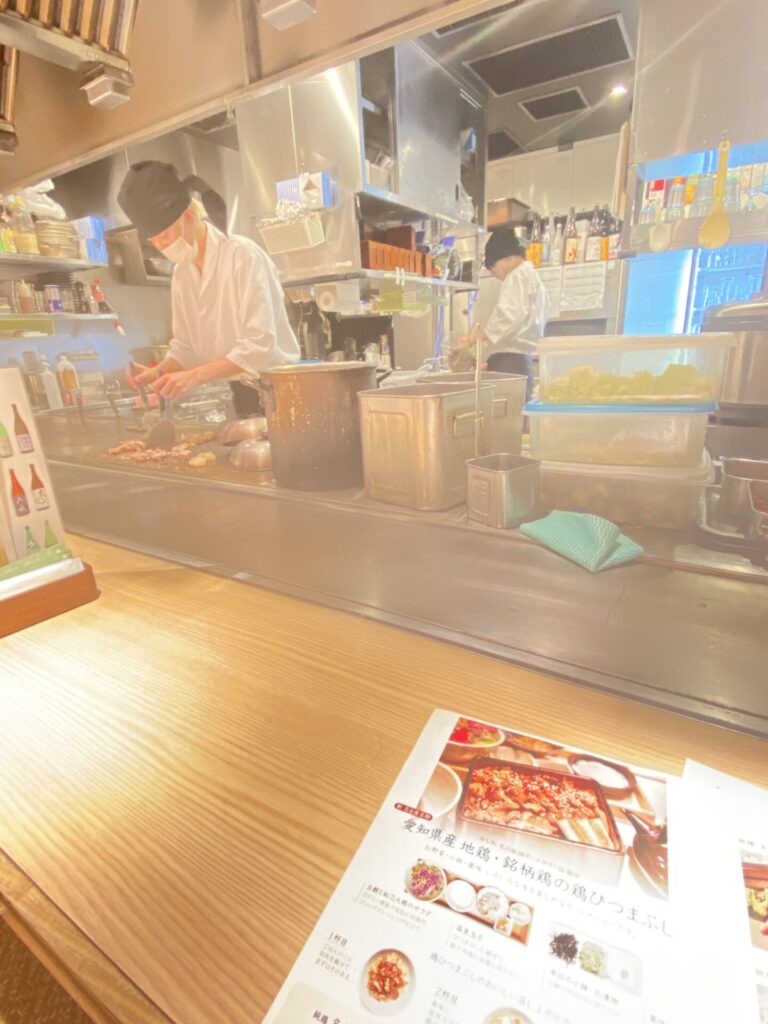
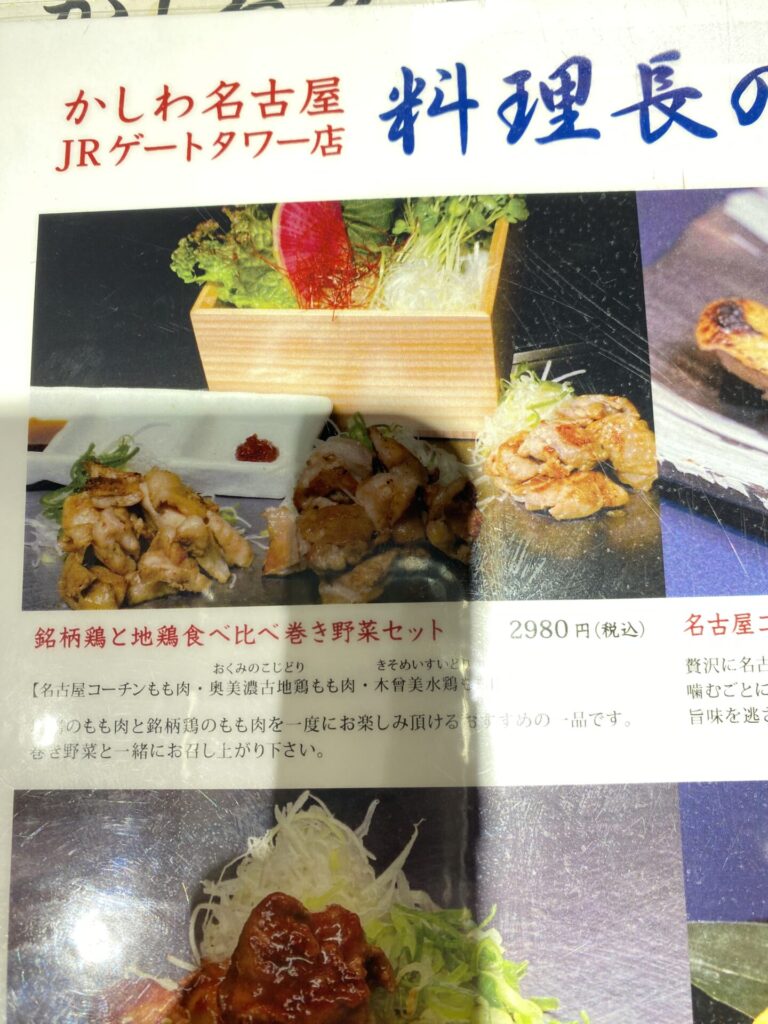
1ー2There was counter seating, table seating and a room for larger groups, but I was alone so I was led to the counter seating.
3.I wasn’t sure what to eat, but I asked for a dish where I could compare three different brands of chicken.
What are the three types of chicken?
- Nagoya Cochin: Nagoya Cochin was authorised by the Japan Poultry Association on 10 March 1905 as the first domestic practical breed. It is regarded as the highest breed of chicken in terms of its tight meat quality, chewiness and umami (savouriness).
- Okumino Ko jidori: Jidori (native) chicken developed in Gifu Prefecture, Japan. The chicken has been brought in Gifu since ancient times and has been further improved. Rare and full of flavour.
- Kiso Meisui Dori: Broilers are specially raised in Gifu Prefecture by the Sanwa Group, a poultry company in Aichi Prefecture, to improve their chicken meat quality.
At first there was an appetiser and vegetables to wrap around the chicken.
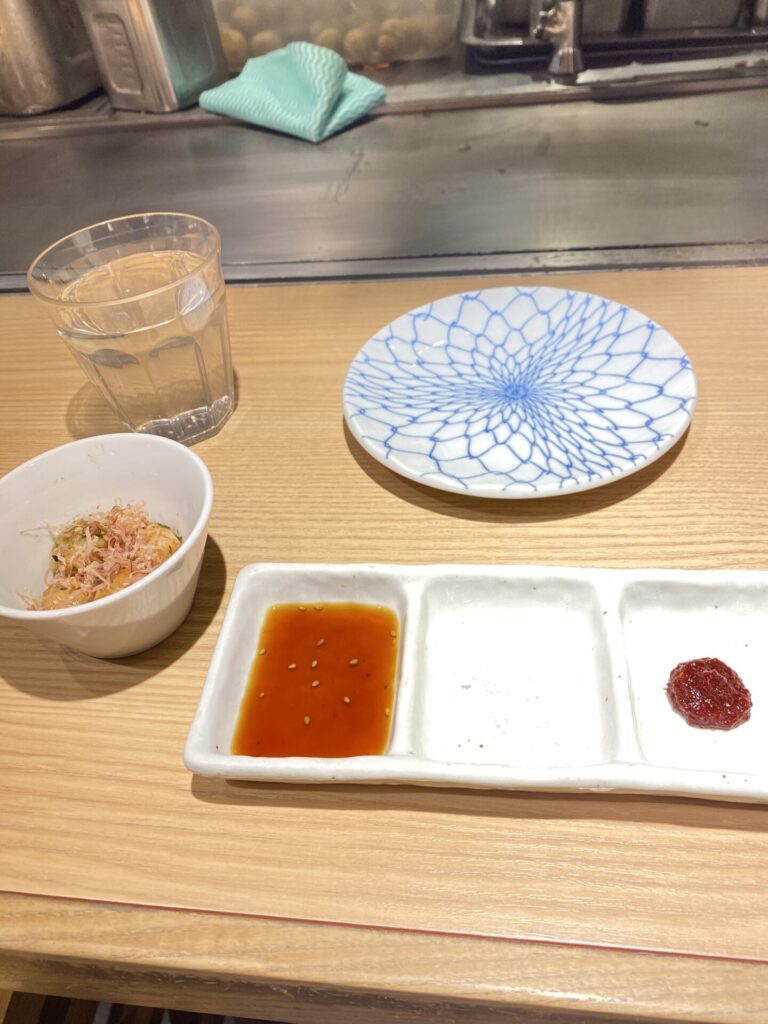
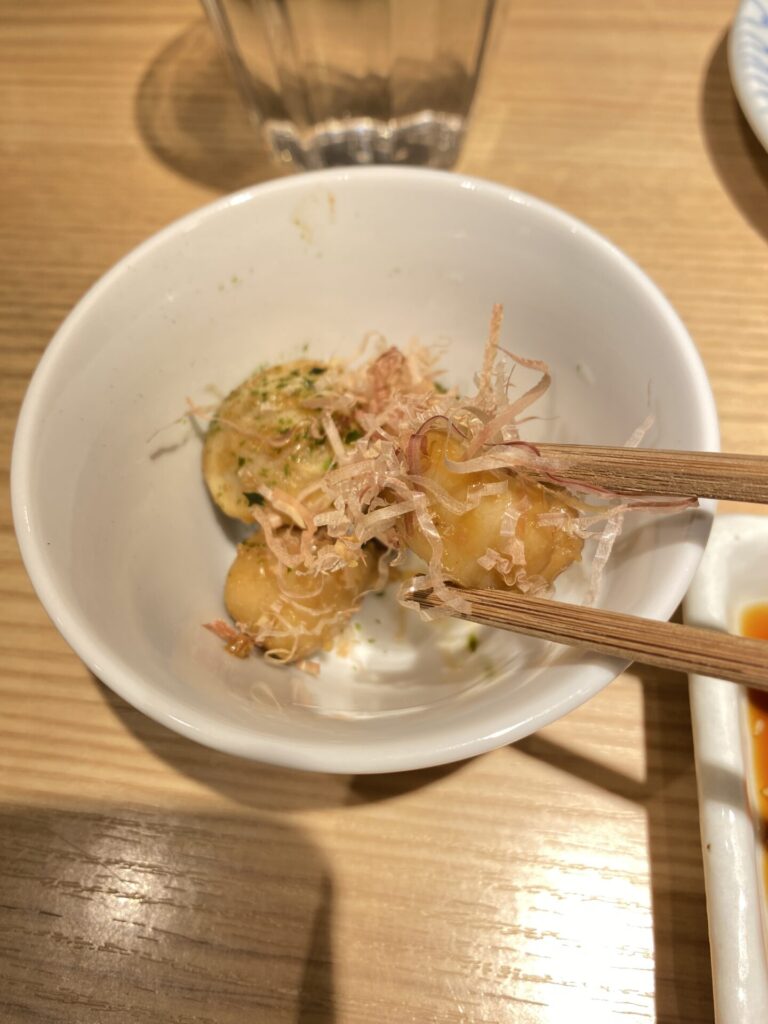
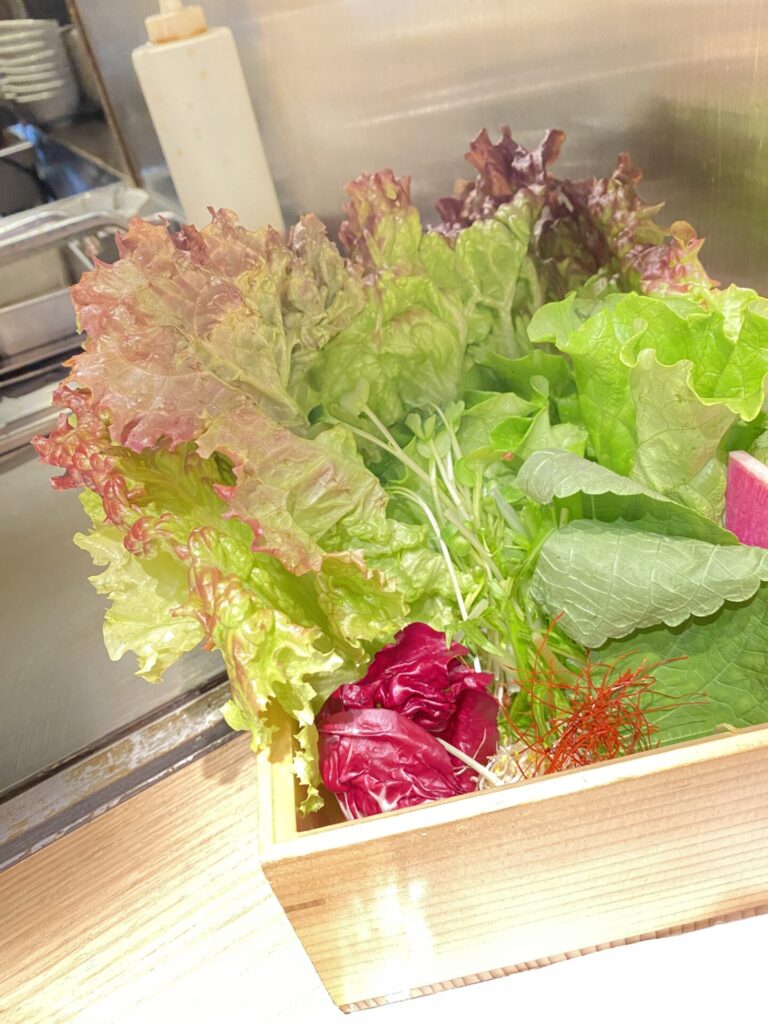

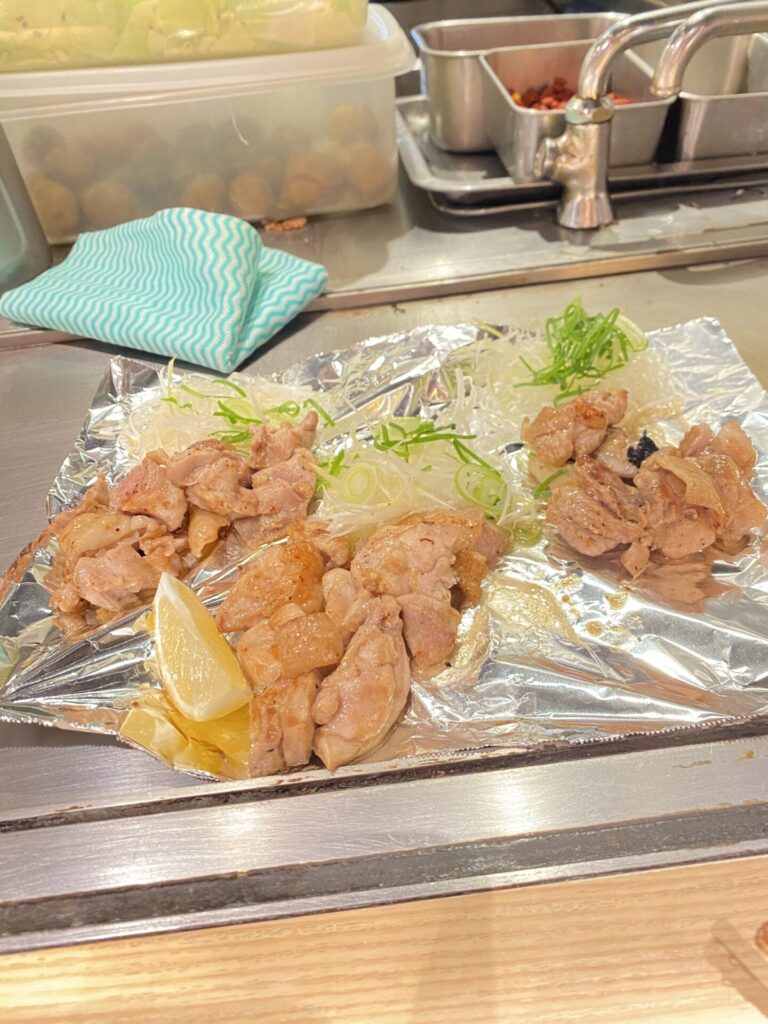
4-5Daikon radishes in a small dish were first served as an appetiser.
6-7A generous portion of vegetables was served in a square. The chicken was wrapped in this.
8.Three different types of chicken meat were served on a griddle, each weighing 100 grams.
All the meats are peaches. From left to right: Kiso-Meisui-Chicken, OkuMino-Ko-jidori Chicken and on the right is Nagoya-Cochin.
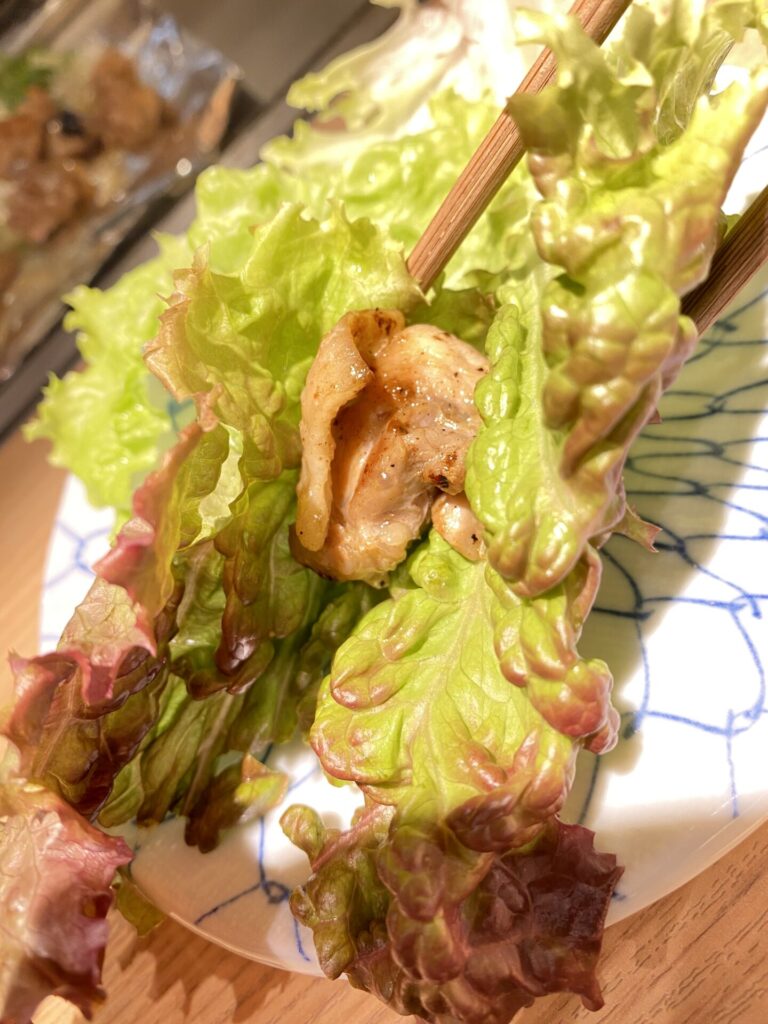
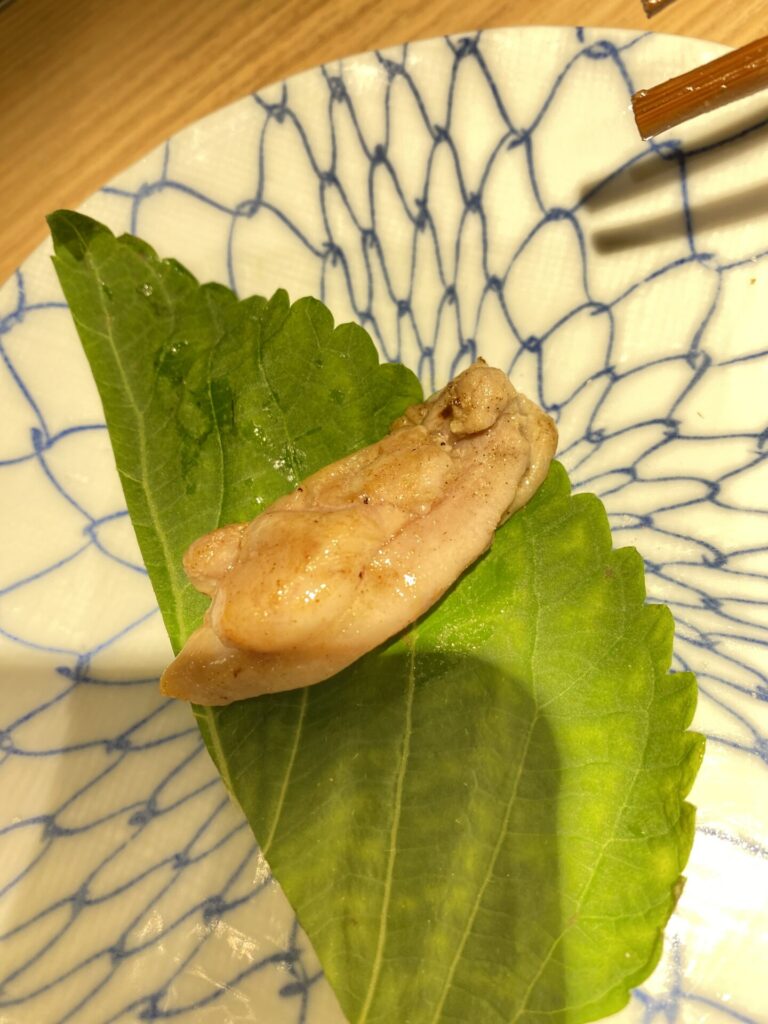
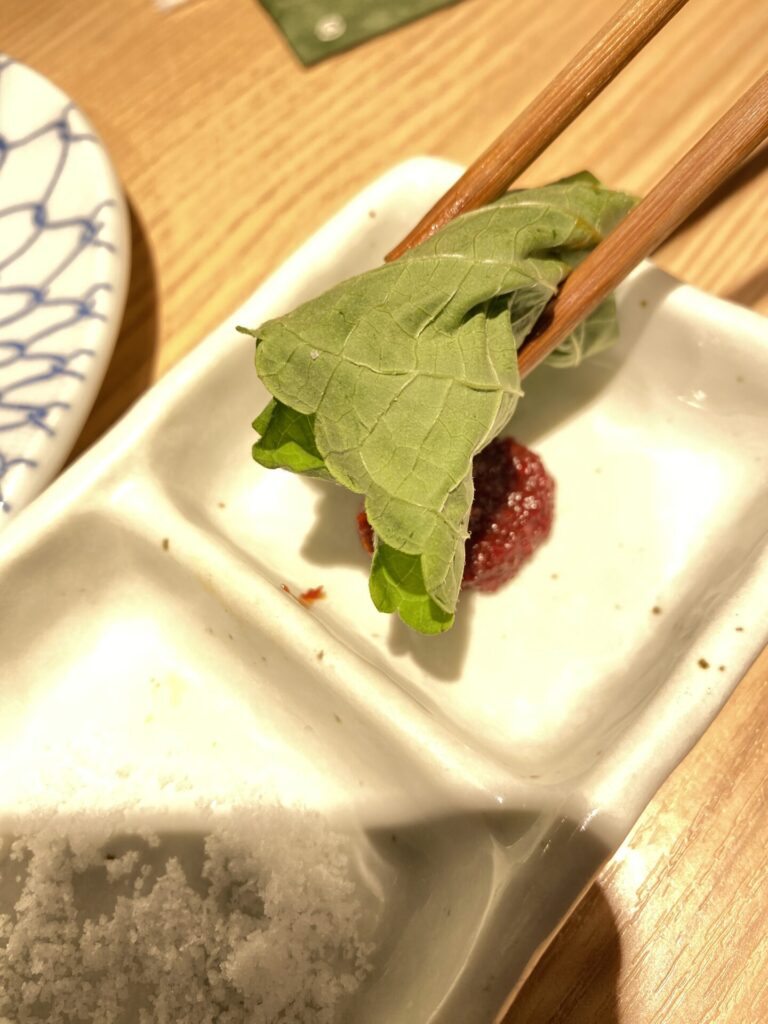
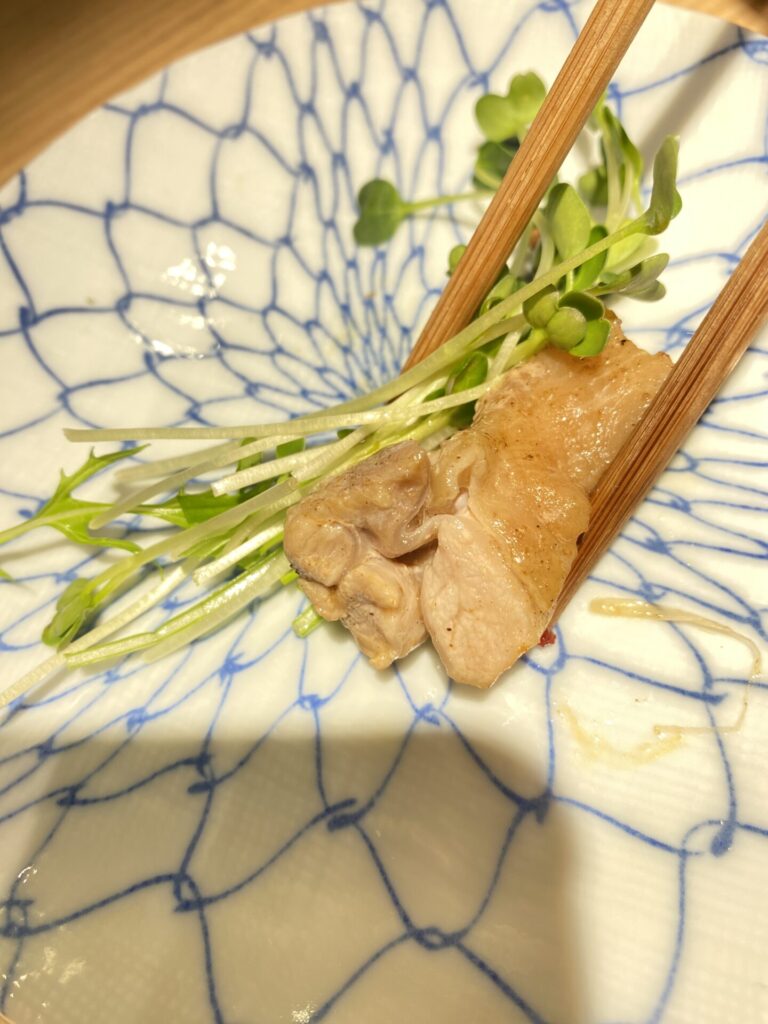
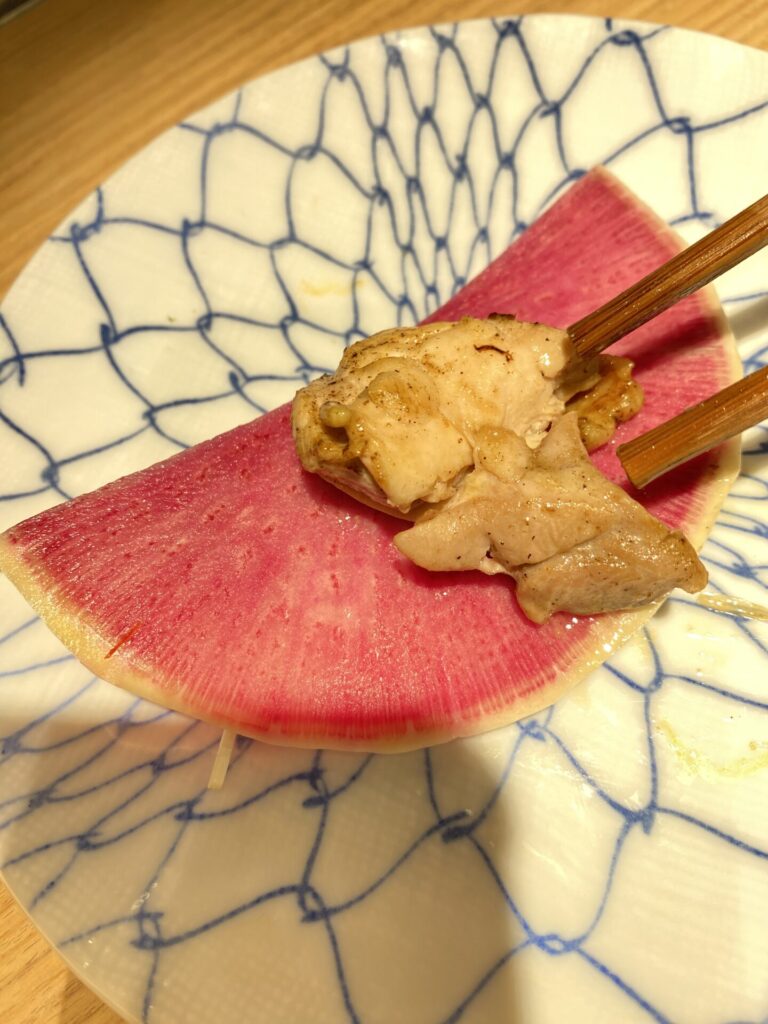
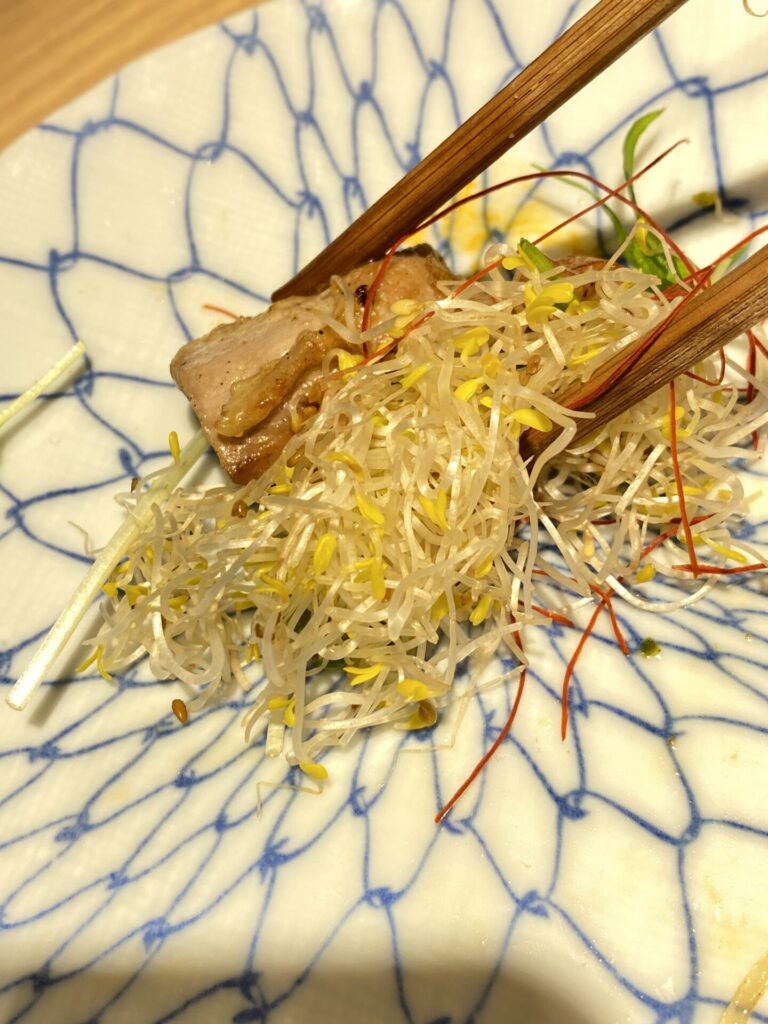
At first, I ate only the chicken and compared the flavours.
After that, I tried wrapping each one with vegetables. There was Japanese sauce and miso, but I prefer it with miso.
Comparison.
Without doubt, the best tasting was Nagoya Cochin.
When I was a child, we had a Nagoya Cochin in my parents’ garden, but I didn’t care much for it. But when I compared them, it was clear that the Nagoya Cochin was tighter and more substantial. It also tastes firm and delicious.
The second was Okumino-jidori, improved in Gifu Prefecture. This also had a good flavour and was tasty, but it did not match the taste and chewiness of the Nagoya Cochin.
The last was Kiso-Meisi-dori. It was characterised by its relatively low oil content. It is true that the texture is somewhat soft and light. Even so, it did not feel watered down. Perhaps it would be good in a raw salad, but the taste was not at all as good as the other two types.
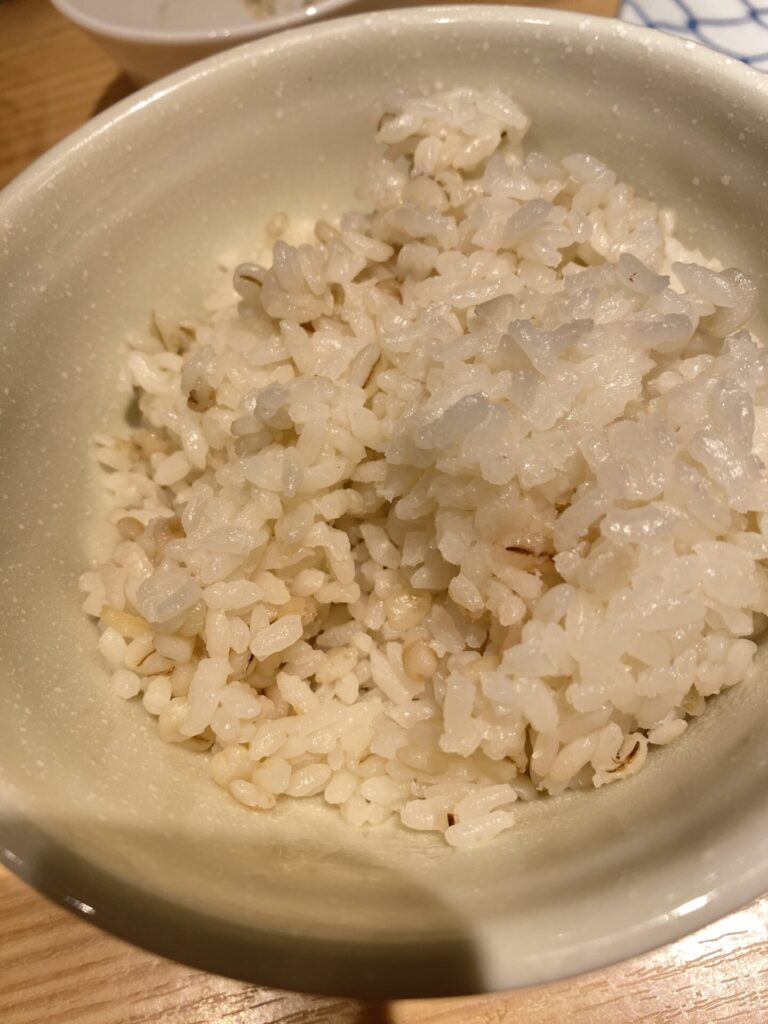
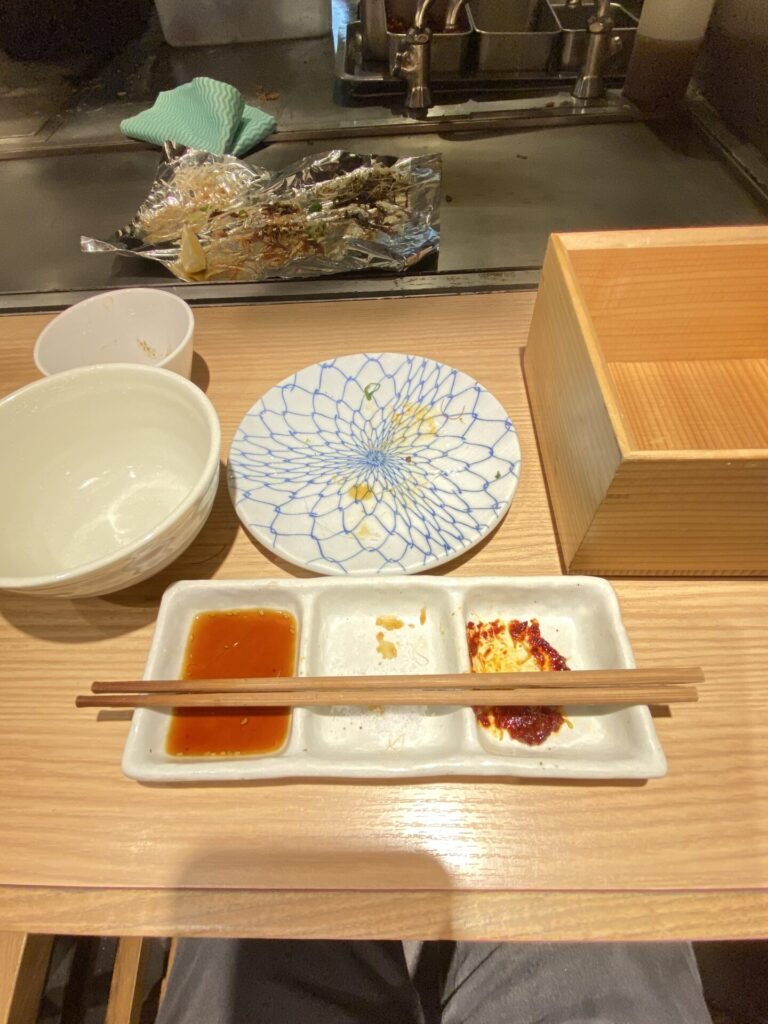
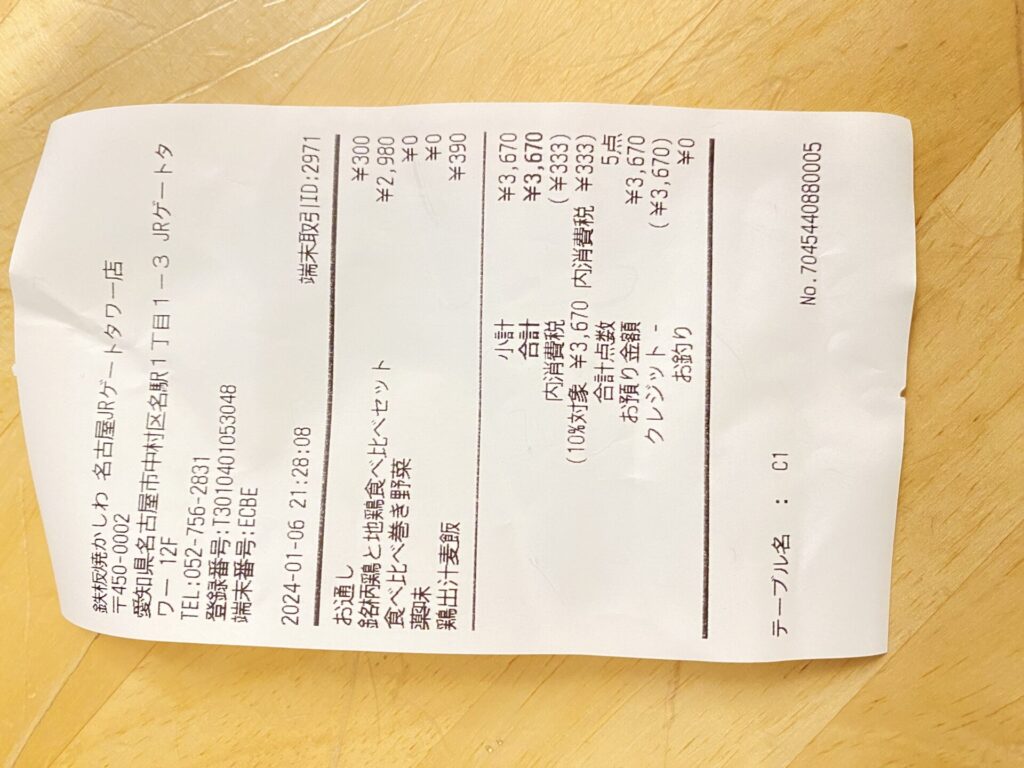
Add rice at the end.
Finally, when I added rice, barley rice was served.
White rice is common in Japan, but recently barley rice has become popular as a healthy food.
The quantity was not so large.
Conclusion
This comparison of three different types of Japanese improved and bred chicken meat showed that the Nagoya Cochin is by far the tastiest.
Nagoya Cochin is the chicken that Nagoya is proud of throughout Japan.
Unfortunately this time I ordered the chicken thigh.
There was also a dish with chicken breast only, although we couldn’t compare like the dish I ate.
Muscle trainees will definitely opt for the breast dish. Not only because you get enough protein, but also because you don’t have to take extra fat.
Even better, there was less rice, which prevents too many carbohydrates.
The amount of chicken meat and vegetables is very high, so you can be sure to get enough to fill you up.
Even if you’re not a muscular person, you probably overeat when you’re travelling and want healthy food.
Please visit Teppanyaki Okonomiyaki Kashiwa. You will surely be satisfied with the food made from chickens improved and nurtured by the Japanese.
Incidentally, the price was 3,670 yen including tax, after adding rice.
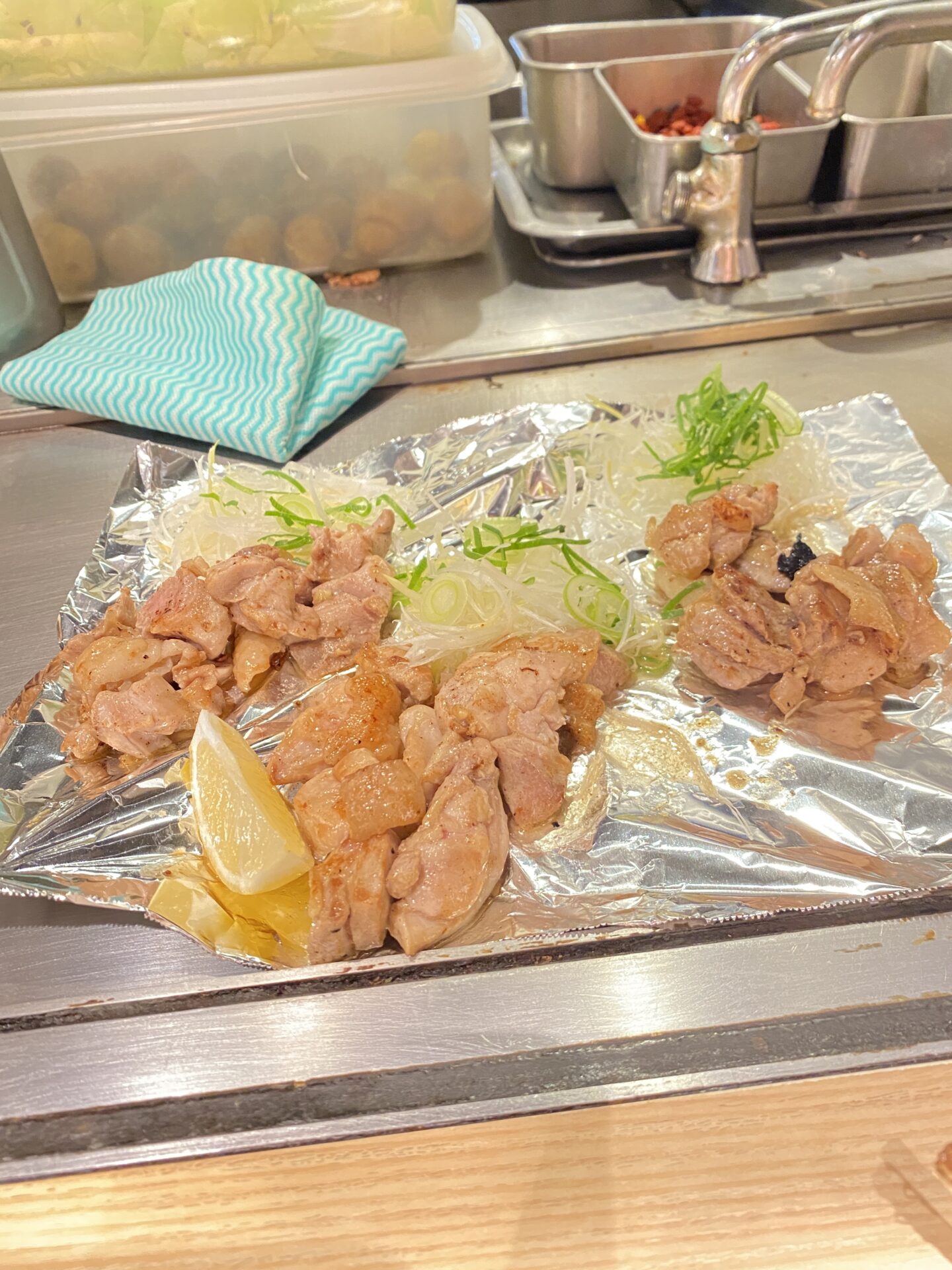


コメント